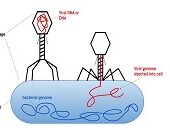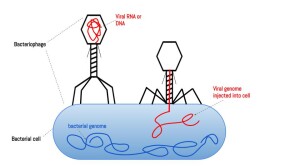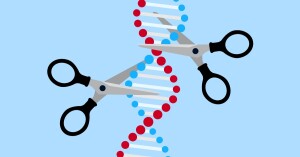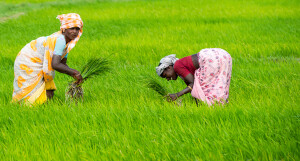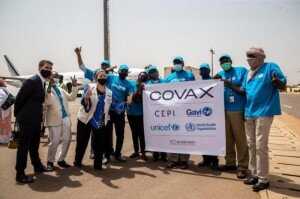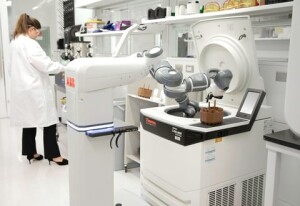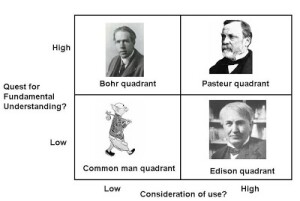After the pandemic, then what? What are the next breakthroughs in science and technology?
“Science can save the world. As proof, look what is happening with the pandemic,” said Tom Standage, deputy editor and head of digital strategy at The Economist. “However, scientific breakthroughs can’t save us all on their own.” He was welcoming the audience and panellists to a webinar co-sponsored by The Economist and CIFAR (Canadian Institute for Advanced Research) held on May 18, 2021.
Standage began by surveying the four panellists on what new scientific breakthroughs are on the horizon.
There will be great strides forward in determining how microbes affect our health, said Carolina Tropini, assistant professor at the University of British Columbia and CIFAR Azrieli Global Scholar. “Currently we think of microbes as pathogens, but they are actually essential for good health.” Industrialization has meant the loss of some good biomes. Scientists may be able to harness microbes that attack viruses, known as phages.
“There’s an old saying: all diseases begin in the gut,” Tropini said, noting there is much research to be done to understand the microbiota. She is excited about developments in personalized medicine and carbon sequestration.
However, basic research must be done. “The current star of solving the pandemic—mRNA—that is using work that was done in the 1970s,” she said. It often takes decades for basic research to come to fruition.
“I foresee that mRNA can be used to develop monoclonal antibodies so that we have another tool against cancer,” said Soumya Swaminathan, chief scientist at World Health Organisation (WHO). There will be giant strides made in the fight against tuberculosis and malaria. “Unfortunately, some diseases are so complex, we don’t have easy biomarkers.”
“Diagnostics is a neglected area,” Swaminathan said. “Yet diagnostics is very important in determining which people are sick from what.” As an example, she pointed to the strip tests for Covid-19, which alerted disease control officers to know where and how the virus was spreading.
She also predicted that “gene editing, a powerful and sensitive tool,” will deliver breakthroughs in addressing blood disorders such as sickle-cell anemia and thalassemia.
“We need to put a process in place for regulating gene editing,” Swaminathan said, noting that WHO created the science division only two years ago. “We have a normative role to play in standardizing the lab assays.” One example she cited was the lack of development of pediatric formulation for drugs. “Our role is to shine a spotlight on problems.”
“We must think about how to break down barriers to science,” said Zia Khan, senior vice-president for innovation at the Rockefeller Foundation. His organization was involved in creating public service announcements 100 years ago, on the prevention of hookworm.
He hopes the barrier between research and development can be reduced, as well as the barrier between different branches of science. As a pandemic-related example, he cited the silos of research on airflow and on lungs—these two areas needed to be put together to raise awareness about airflow and pandemic prevention.
“Public education is important,” Khan said, but it’s not as simple as posting messages. He said general members of the public were giving equal weight to unsubstantiated blog articles and to announcements from top scientists at the WHO.
Khan believes the next areas for big breakthroughs in science will occur in gene editing and artificial intelligence.
“We will also have to face unintended consequences of breakthroughs, and deal with those, too.” As an example, he pointed to the Green Revolution which helped feed billions more people. “Although this averted massive starvation, it has increased monocultures and disease susceptibility; and it has increased wealth inequities. How can we mitigate the biggest harms?”
“I think the next big problems will be related to climate change, and inequalities of opportunity,” said Alan Bernstein, president and CEO at CIFAR.
As well, scientists and engineers need to develop alternative sources of energy. “A billion people don’t have access to a good source of energy at home. As a result, women are cooking over smoky fires—this means deforestation and lung disease.”
“If only we can harness solar energy,” Bernstein said. A possible route is biologically inspired solar energy, but this touches on how poorly one branch of science understands each other. “Biologists don’t understand physicists,” so how can they work together on an interdisciplinary approach?
Lessons Learned from the Pandemic
“The pandemic has meant a huge invigoration of the field of microbiology,” said Tropini. It also reminded us of the importance of transparency, humility, and compassion.
“Global collaboration is very important,” said Swaminathan. “That is more effective than a country-by-country approach.” She said the private sector had to be engaged. “Academic research is good but how can the results be scaled up” and applied to a massive demand?
“We need fair access, so it was good to set up COVAX, to ensure every country has access to vaccines,” Swaminathan said.
“The current discussion about patents is a healthy debate,” she said, noting that a comparable discussion had occurred for development of HIV drugs.
Swaminathan thought the public perception of science was positive, “and the pandemic gave us an appreciation for concepts such as ‘clinical trial’ and other epidemiological terms.” It’s been a crash course on immunology. “Behavioral scientists have gained new insights on how to get behavioral change.”
“People saw how inequitable the pandemic was,” Khan said. “It’s more accepted that scientific research is part of modern infrastructure.”
The pandemic has raised new questions about data, which should be seen as a public good. “How can we create a system of spotting early markers of the pandemic? How do we aggregate and share the data?” He predicts crises will become more frequent, so using big data to detect early warning signs is key.
“The pandemic altered working life,” Bernstein said. “Everything pivoted toward getting out of the pandemic.” He cited an example of a lab in Israel, which put its regular research on hold and became a testing centre for the state of Israel.
He thought the big take-away lesson from the pandemic was the critical importance of young people, who have energy and innovation to tackle complex problems.
Breaking Down Barriers
The pandemic highlighted the interdisciplinary nature of successful research. “Artificial intelligence was used in biology to discover new compounds for testing against the disease,” Tropini said. “Robotics changed and speeded up all the lab work that had to be done in research and testing.”
“WHO has a greater focus on science, with its newly formed science council,” said Swaminathan. WHO must determine how to work with countries to leverage the cutting-edge technologies of AI and gene editing. “We are expanding the collaboration with scientists around the world.”
“There’s nothing like a good problem to get pure and applied science together and working on a solution,” said Khan. He cited an example of using satellite images to help decide where to locate renewable energy resources.
Bernstein spoke briefly about Pasteur’s quadrant, which divides science into basic and applied fields, and within those, “consideration of use.” He placed mRNA into the category of “novel and useful” science. He said lightbulbs are useful but not innovative science.
Science happens when there are many random intersections of ideas, Bernstein said. “None of the vaccines with mRNA could have been developed without the soap bubble experiments on the lipid layer.”
“The gap between lab time and implementation has shrunk, given the vaccine was developed within a year,” Standage said.
For this, we are all thankful. ♠️

